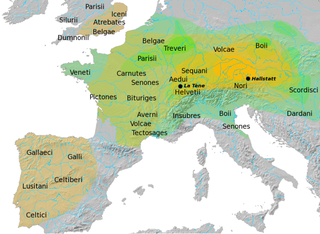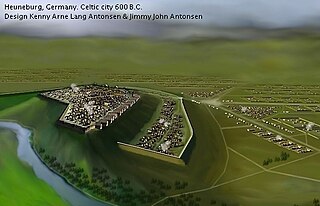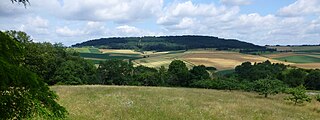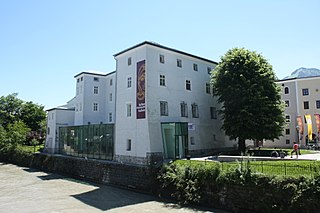Description
The warrior wears a torc (neck-ring), a belt with a typical late Hallstatt dagger, and a pointed hat, possibly made (as with the real hat in the princely grave of Hochdorf) of birchbark.
While the legs are modelled with some realism, the upper body is rather schematic and the face is extremely sketchy, leading to speculation that the man might be intended to be seen as wearing a mask, as is known from burials in Klein-Klein, Styria, Austria, Trebeništa (North Macedonia) and the much earlier shaft-graves of Mycenae, c. 1500 BC.
The statue shows significant weathering, suggesting that it stood exposed to the elements for a long time before being buried. Other anthropomorphic statues of the early Iron Age have been found in Rottenburg, Tübingen, Stammheim and Stockach (all Baden-Württemberg, Germany), but they are far more stylised, more carving than statue. In the following La Tène period, anthropomorphic statues are still very rare, but examples include the finds from Glauberg (Hessen, Germany), Holzgerlingen figure (Baden-Württemberg, Germany), the Mšecké Žehrovice Head (Bohemia), and the sculptures at Roquepertuse.
Greek influence ( kouroi ) has been discussed. Numerous black figure vessels from fortified settlements of the period attest trading contacts with the Mediterranean, probably via the Rhône River and the Greek colony of Massilia (Marseille). Much closer stylistic connections exist with the far more elaborate statues from Capestrano, Picenium, Italy (650-550 BC) and Casale Marittimo (middle of the 7th century).

The La Tène culture was a European Iron Age culture. It developed and flourished during the late Iron Age, succeeding the early Iron Age Hallstatt culture without any definite cultural break, under considerable Mediterranean influence from the Greeks in pre-Roman Gaul, the Etruscans, and the Golasecca culture, but whose artistic style nevertheless did not depend on those Mediterranean influences.

A torc, also spelled torq or torque, is a large rigid or stiff neck ring in metal, made either as a single piece or from strands twisted together. The great majority are open at the front, although some have hook and ring closures and a few have mortice and tenon locking catches to close them. Many seem designed for near-permanent wear and would have been difficult to remove.

The Urnfield culture was a late Bronze Age culture of Central Europe, often divided into several local cultures within a broader Urnfield tradition. The name comes from the custom of cremating the dead and placing their ashes in urns, which were then buried in fields. The first usage of the name occurred in publications over grave sites in southern Germany in the late 19th century. Over much of Europe, the Urnfield culture followed the Tumulus culture and was succeeded by the Hallstatt culture. Some linguists and archaeologists have associated this culture with a pre-Celtic language or Proto-Celtic language family. By the end of the 2nd millennium BC, the Urnfield Tradition had spread through Italy, northwestern Europe, and as far west as the Pyrenees. It is at this time that fortified hilltop settlements and sheet‐bronze metalworking also spread widely across Europe, leading some authorities to equate these changes with the expansion of the Celts. These links are no longer accepted.

The Hallstatt culture was the predominant Western and Central European archaeological culture of the Late Bronze Age from the 12th to 8th centuries BC and Early Iron Age Europe from the 8th to 6th centuries BC, developing out of the Urnfield culture of the 12th century BC and followed in much of its area by the La Tène culture. It is commonly associated with Proto-Celtic speaking populations.

The Heuneburg is a prehistoric Celtic hillfort by the river Danube in Hundersingen near Herbertingen, between Ulm and Sigmaringen, Baden-Württemberg, in the south of Germany, close to the modern borders with Switzerland and Austria. It is considered to be one of the most important early Celtic centres in Central Europe, particularly during the Iron Age Hallstatt culture period. Apart from the fortified citadel, there are extensive remains of settlements and burial areas spanning several centuries.

The Jastorf culture was an Iron Age material culture in what is now Germany, stretching north into Jutland, and east into Poland, spanning the 6th to 1st centuries BC, forming the southern part of the Pre-Roman Iron Age.
The Arras culture is an archaeological culture of the Middle Iron Age in East Yorkshire, England. It takes its name from the cemetery site of Arras, at Arras Farm, (53.86°N 0.59°W) near Market Weighton, which was discovered in the 19th century. The site spans three fields, bisected by the main east-west road between Market Weighton and Beverley, and is arable farmland; little to no remains are visible above ground. The extent of the Arras culture is loosely associated with the Parisi tribe of pre-Roman Britain.

The Glauberg is a Celtic hillfort or oppidum in Hesse, Germany consisting of a fortified settlement and several burial mounds, "a princely seat of the late Hallstatt and early La Tène periods." Archaeological discoveries in the 1990s place the site among the most important early Celtic centres in Europe. It provides unprecedented evidence on Celtic burial, sculpture and monumental architecture.

The archaeology of Northern Europe studies the prehistory of Scandinavia and the adjacent North European Plain, roughly corresponding to the territories of modern Sweden, Norway, Denmark, northern Germany, Poland and the Netherlands.

Zuffenhausen is one of three northernmost boroughs of the city of Stuttgart, capital of the German state of Baden-Württemberg. The borough is primarily an incorporation of the formerly independent townships Zuffenhausen, Zazenhausen, Neuwirtshaus, and Rot, the latter is a historic town that gained importance in 1945 as a refugee camp for German refugees. As of 2009 around 35,000 people lived in Zuffenhausen's area of 1,200 ha (12 km2), making it the third largest of Stuttgart's outer boroughs. Zuffenhausen is also one of the oldest continuously inhabited places in Stuttgart with evidence of permanent settlements that can be traced back 7,500 years.

The Ipf is a mostly treeless mountain, near Bopfingen, Ostalbkreis, Baden-Württemberg, Germany, with a prehistoric hill fort on its top.

The Hochdorf Chieftain's Grave is a richly-furnished Celtic burial chamber near Hochdorf an der Enz in Baden-Württemberg, Germany, dating from 530 BC in the Hallstatt culture period. It was discovered in 1968 by an amateur archaeologist and excavated from 1978 to 1979 by the State Historical site office known as the Baden-Württemberg Landesdenkmalamt under the direction of German archeologist Jörg Biel with association from excavation technician Fritz Maurer. By then, the burial mound covering the grave, originally 6 m (20 ft) in height and about 60 m (200 ft) in diameter, had shrunk to about 1 m in height and was hardly discernible due to centuries of erosion and agricultural use.
In Europe, the Iron Age is the last stage of the prehistoric period and the first of the protohistoric periods, which initially meant descriptions of a particular area by Greek and Roman writers. For much of Europe, the period came to an abrupt end after conquest by the Romans, though ironworking remained the dominant technology until recent times. Elsewhere, the period lasted until the early centuries AD, and either Christianization or a new conquest in the Migration Period. Iron working was introduced to Europe in the late 11th century BC, probably from the Caucasus, and slowly spread northwards and westwards over the succeeding 500 years. For example, the Iron Age of Prehistoric Ireland begins around 500 BC, when the Greek Iron Age had already ended, and finishes around 400 AD. The use of iron and iron-working technology became widespread concurrently in Europe and Asia.

A grave field is a prehistoric cemetery, typically from Bronze Age and Iron Age Europe.

The Keltenmuseum in Hallein near Salzburg contains major discoveries from the La Tene period of the Iron Age which come from burials in the area surrounding the nearby Hallein Salt Mine, at Dürrnberg. The Museum was founded in 1882 and was housed in the Bürgerspital. In 1930 it was moved into the Rathaus and from 1952 occupied a gateway of the town or stadt's fortifications. In 1970 the name was changed to Keltenmuseum and the museum was moved into the former Salt Offices on the Pflegerplatz, which fronts the river Salzach. In 1980 the Museum staged a major exhibition "Die Kelten in Mitteleuropa", which demonstrated the wealth of discoveries that were being made at the Hallein. In 1993-4 the Austrian architect Heinz Tesar drew up plans for the conversion and extension of the Museum and on 1 January 2012 the Museum became a constituent part of Salzburg Museum.

Heidengraben is the name given to the remains of a large Celtic fortified settlement (oppidum) dating to the Iron Age, located on the plateau of the Swabian Jura in the districts of Reutlingen and Esslingen in Baden-Württemberg, Germany. The settlement was in use from the 2nd century BC to 1st century BC, during the La Tène period. By surface area, Heidengraben is the largest oppidum in all of mainland Europe.

Magdalenenberg is the name of an Iron Age tumulus near the city of Villingen-Schwenningen in Baden-Württemberg, Germany. It is considered the largest tumulus from the Hallstatt period in Central Europe with a volume of 33.000 cubic meters.

Alte Burg is a large Celtic hilltop fortification, or hillfort, that may have been used as a cult or assembly site for the regional population. It is located 9 kilometers from a major settlement of the Hallstatt and early La Tène period, the Heuneburg. Alte Burg lies in the municipality of Langenenslingen in Baden-Württemberg, Germany.

The Holzgerlingen figure is a two-faced anthropomorphic statue of the early to middle La Tène culture. The statue depicts a human figure from the belt up, each side carved with a mirror image of the other, wearing a horn-like headdress which is probably an example of the Celtic leaf crown motif. The figure is thought to be a Celtic cult object, perhaps representing a god, though it is sometimes thought of as a funerary monument. Over 2 metres tall, the Holzgerlingen figure is the largest known Iron Age statue. The statue is presently at the Landesmuseum Württemberg.

The Waldenbuch pillar is a four-sided pillar of the early to middle La Tène culture. The pillar, which probably originally extended to an anthropomorphic bust akin to the Holzgerlingen figure, only survives in a fragmentary form. It is presently at the Landesmuseum Württemberg.

















